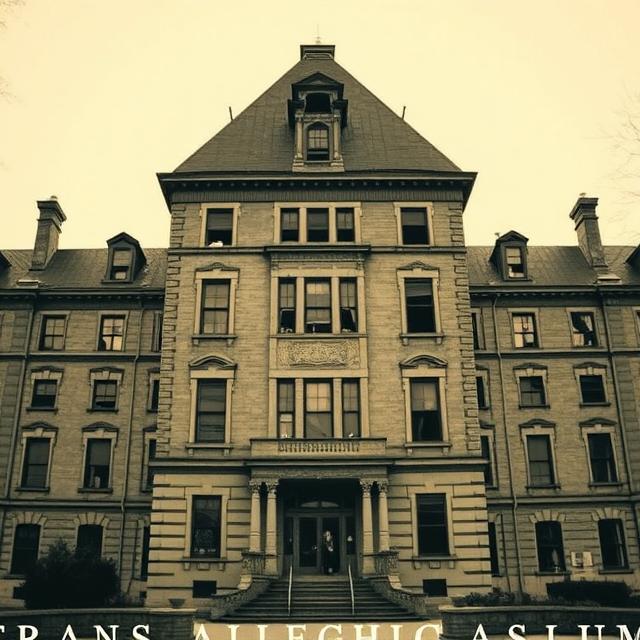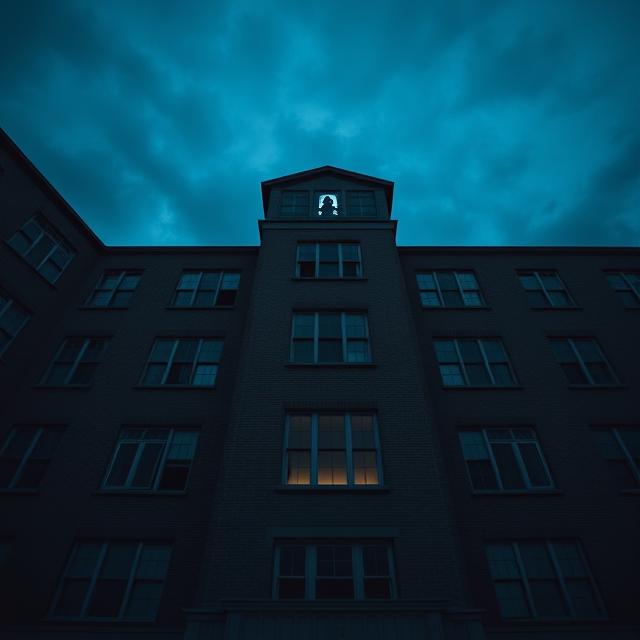Perched atop a hill overlooking the town of Weston, West Virginia, stands the imposing structure of the Trans-Allegheny Lunatic Asylum, originally known as the Weston State Hospital. Built in the mid-19th century with the noble intention of providing a sanctuary for the mentally ill, its history is a complex tapestry woven with threads of progressive treatment, overcrowding, questionable practices, and ultimately, profound human suffering. Over its 130 years of operation, countless souls passed through its heavy stone doors, leaving behind not only their stories but, many believe, their lingering spirits. Today, the asylum is a popular destination for paranormal investigators and those fascinated by the intersection of history and the supernatural, drawn by the numerous accounts of ghostly encounters within its decaying walls.
The asylum’s origins trace back to the 1850s when prominent reformer Dorothea Dix advocated for a more humane treatment of the mentally ill. The chosen site in Weston was deemed ideal for its tranquil setting and the belief that fresh air and natural beauty could aid in the patients’ recovery. The impressive Gothic Revival architecture, constructed by local master builder Richard Snowden Andrews, was intended to inspire hope and healing.
However, the initial ideals of the asylum gradually succumbed to the harsh realities of overcrowding and limited resources. Designed to accommodate around 250 patients, the facility at its peak housed over 2,400 individuals. This massive influx led to a deterioration of living conditions and strained the staff’s ability to provide individualized care.
The treatments administered at the asylum evolved over time, reflecting the prevailing medical understanding (and often misunderstanding) of mental illness. Early approaches focused on moral therapy, emphasizing a supportive and structured environment. However, as the patient population swelled, more drastic and often inhumane methods were employed, including hydrotherapy, lobotomies, and electroconvulsive therapy, sometimes administered without proper consent or understanding of their long-term effects.
The sheer volume of human experience contained within the asylum’s walls – the hopes, the fears, the suffering, and the deaths – has led many to believe that the very stones of the building have absorbed a palpable energy, a residue of the past that manifests as paranormal activity.
Numerous visitors, staff, and paranormal investigators have reported a wide range of unsettling phenomena within the asylum:
- Disembodied Voices and Whispers: Eerie whispers, unintelligible murmurs, and even clear voices have been heard in empty corridors and patient rooms. Some claim to have heard cries of distress or the echoes of conversations from decades past.
- Shadow Figures: Sightings of dark, fleeting shapes moving in peripheral vision or standing silently in doorways are common. These figures are often described as indistinct but undeniably present.
- Cold Spots: Sudden and localized drops in temperature, often accompanied by a feeling of unease or being watched, are frequently reported in specific areas of the asylum, particularly those with a history of intense suffering or death.
- Moving Objects: Some accounts include objects being inexplicably moved, such as doors opening and closing on their own, or items being displaced.
- Emotional Manifestations: Visitors often report experiencing overwhelming feelings of sadness, anxiety, or even anger in certain areas, seemingly absorbing the residual emotions of former patients.
- Physical Sensations: Reports of being touched, pushed, or feeling a cold breath on their neck are not uncommon, adding a more tangible and often frightening dimension to the alleged hauntings.
The asylum has been featured on numerous paranormal investigation shows, with many teams claiming to have captured compelling evidence of ghostly activity, including EVPs (Electronic Voice Phenomena) and visual anomalies. The sheer number of reported experiences and the historical context of the building contribute to its strong reputation within the paranormal community.
Several specific areas within the asylum are said to be particularly active. The lobotomy room, where these controversial procedures were performed, is often cited as a place of intense negative energy. The geriatric ward, where many patients spent their final days, is also known for frequent reports of unsettling phenomena. Even the seemingly more benign recreational areas have witnessed claims of disembodied sounds and shadowy figures.
The identities of the spirits believed to haunt the asylum are as varied as the patients who once resided there. Some speculate that they are the lingering consciousness of individuals who suffered greatly or died within its walls, their emotional pain or unfinished business keeping them tethered to the physical location. Others believe that the building itself has somehow become a conduit for paranormal energy.
While the asylum’s history is undeniably tragic, it’s important to approach the claims of haunting with a degree of critical thinking. The atmosphere of the decaying building, coupled with the knowledge of its past, can create a highly suggestive environment. Our minds can sometimes interpret ambiguous sensory information in ways that align with our expectations.
However, the sheer volume and consistency of the reported phenomena from a wide range of individuals, many with no prior belief in the paranormal, suggest that something unusual may indeed be occurring at the Trans-Allegheny Lunatic Asylum. Whether these are the genuine echoes of tormented souls or some other unexplained phenomenon remains a subject of debate and ongoing investigation.
The asylum stands today as a historical landmark and a testament to a bygone era of mental health treatment. While its original purpose has long since passed, it continues to draw visitors seeking to connect with its complex past, both the documented history and the whispered legends of the spirits in the stone. The cries from within its walls, whether real or perceived, serve as a potent reminder of the human stories etched into its very foundation.
Want to explore the shadows even deeper? For more chilling cases like this, visit SinisterArchive.com, where the legends are real.




